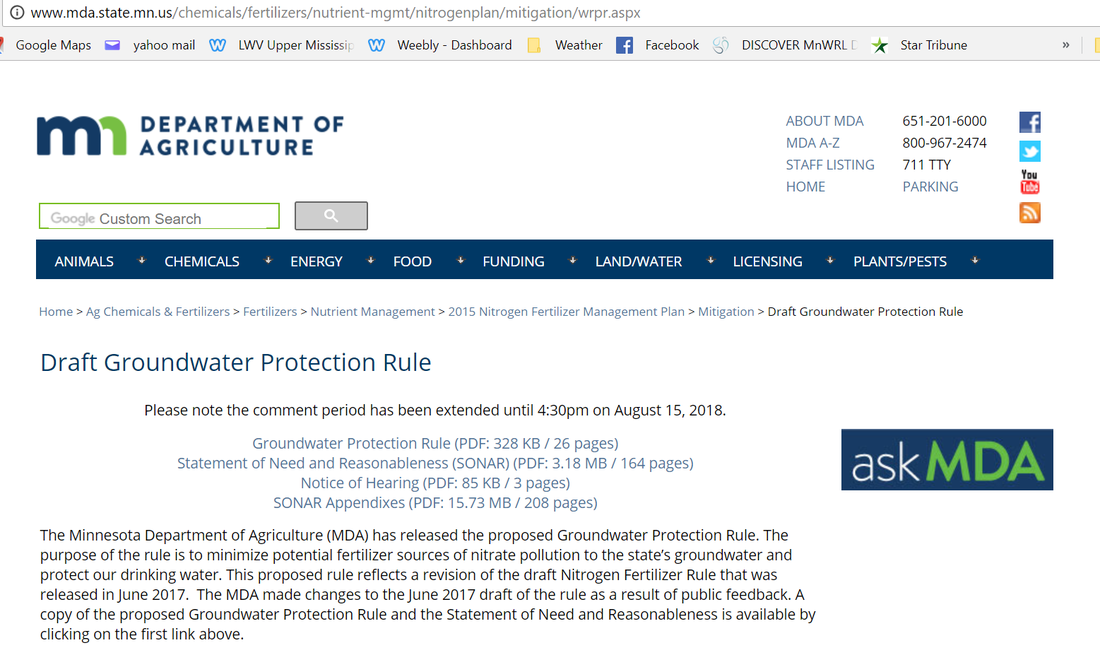|
Groundwater is a critical resource for Minnesota - it feeds our streams, fills our lakes and is a (mostly) clean and reliable source of drinking water for about 75% of the population. Many areas have localized problems, some with natural contaminants like arsenic, man-made toxics from unsound disposal of industrial wastes and many areas with nitrate contamination at levels that are of concern. Here's a link to a video from an LWV UMRR meeting last October where Chris Parthun from the Minnesota Department of Health describes the problems with nitrate contamination in our water. In 1989, the Minnesota Legislature passed a law aimed at increasing protection of Minnesota's groundwater resources. Click here to watch a video detailing Minnesota's 1989 Groundwater Protection Act. This act included a set of tiered actions to be taken to address everyday sources of groundwater contamination not addressed by programs like Superfund or the Leaking Underground Storage Tank program. This Act also established a groundwater protection goal of preventing degradation and reducing pollution where is has already occured. One area where groundwater protection is particularly thorny is in agricultural areas, where nitrate contamination is affecting both public and private wells, and the levels are rising. As laid out in the Groundwater Protection Act, the Minnesota Department of Agriculture is responsible for developing and administering programs and laws to address this. This has not been an easy course, and the twists and turns abound. This link leads to a blog post on the Loon Commons Blog by Matt Doll of the Minnesota Environmental Partnership. Here, Matt describes the rule that the Minnesota Department of Agriculture proposed to address the growing problem of nitrate in groundwater.
The Minnesota Legislature introduced bills to stop this rule. LWV UMRR Chair Gretchen Sabel testified in both the House and Senate, on behalf of LWV Minnesota, in opposition to these bills. This link will take you to a copy of her testimony in the House. In the end, the bills were passed and Governor Dayton vetoed it. The Ag Committees in both houses have taken steps to use an administrative procedure to further slow the rule. Here's another blog post from Matt Doll on the topic. . The saga continues... the Minnesota Department of Agriculture is now in the process of finalizing the rule. Public comment will be taken until August 15 - read about it here. And comment! Clean water is important for all of us in the Upper Mississippi - Minnesota is the headwaters state, and this rule is just one part of the solution.
0 Comments
Your comment will be posted after it is approved.
Leave a Reply. |
| LWV Upper Mississippi River Region | UMRR blog |


 RSS Feed
RSS Feed